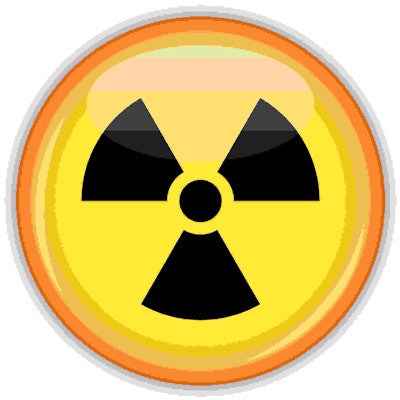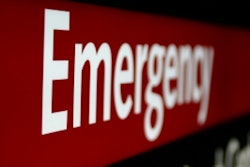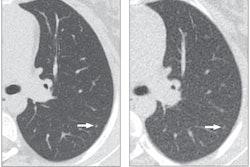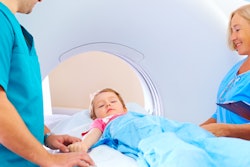
Children who had CT scans at nonpediatric hospitals in Arkansas received twice the radiation dose as kids who were scanned at hospitals with a dedicated pediatric trauma center using optimized scanning protocols, according to a study published online August 25 in the Journal of the American College of Radiology.
Children scanned at the nonpediatric hospitals received a median effective radiation dose of 3.8 mSv, compared with a median effective dose of 1.6 mSv at the specialized units, according to a group led by Dr. Rosemary Nabaweesi from the University of Arkansas for Medical Sciences in Little Rock.
The researchers see the findings as an indication that there's room for improvement at nonpediatric hospitals. They offered several suggestions for doing so, such as optimized scanning protocols and the use of a centralized registry for pediatric CT scans that will enable facilities to avoid repeat scans while tracking their dose and comparing it with that of their peers (JACR, August 25, 2017).
"[Nonpediatric hospitals] have the potential to substantially reduce the medical radiation received by injured children," they wrote.
Rising CT use in kids
The use of CT has been rising for children, particularly as concerns over the effects of concussion have grown, the authors noted. In particular, CT use for head imaging has grown at hospitals that see fewer kids, as well as at community hospitals and by providers who don't have pediatric residency training. At the same time, the cancer risks to children from radiation exposure can be two to three times higher than for adults, they wrote.
A number of tools are available to reduce CT radiation dose, but adoption of these techniques can be variable, especially at facilities that do not specialize in pediatric trauma. Because most injured kids are managed at nonspecialized hospitals, the authors decided to examine the differences in radiation dose between these sites and pediatric trauma centers.
The group's work was assisted by the creation of a web-based image repository in Arkansas in 2011 that collected all pediatric CT scans performed across the state and enabled providers to determine whether a scan had already been performed before ordering a new exam. A study in 2016 by Nabaweesi et al found that the repository helped reduce by nearly half the odds that an injured child would receive a repeat CT scan.
For the current study, the researchers examined radiation dose data from the registry as well as from PACS networks for pediatric CT trauma exams throughout Arkansas; the state's trauma network includes 64 trauma units, two of which are pediatric trauma centers (one of the centers is located in a neighboring state).
Data from 487 children (median age, 7.2 years) were included in the study, and a total of 1,029 CT scans were performed. The researchers collected demographic data on the injured kids, as well as details such as how the children were transported to the trauma units and the severity of their injuries.
Children seen at the nonpediatric hospitals received a median effective radiation dose of 3.8 mSv, compared with 1.6 mSv for children examined at specialized pediatric trauma units. The difference in dose held up across multiple variables, such as the ethnicity or gender of the children, or the means by which they were transported to the hospitals.
The difference in dose was also evident in a subset of patients who received CT scans at both the nonpediatric hospitals and the pediatric centers -- the dose difference was also twice as high. And an analysis of radiation dose by type of facility found that doses tended to be higher at urban hospitals than in rural facilities.
Tools for reducing dose
Why did the pediatric trauma centers produce lower radiation doses?
The authors noted that their trauma center uses optimal CT scanning protocols designed to reduce radiation dose in children; these protocols may not be in use at nonspecialized hospitals. The protocols are based on American College of Radiology criteria with dose modulation and iterative reconstruction. The following four rules are in place for scanning at their facility:
- Repeat scans are only performed with the approval of a radiologist.
- No contrast is used for head and cervical spine studies, while all chest, abdominal, and pelvic scans are done with contrast.
- Data from chest and abdominal scans are used to reconstruct studies of the thoracic and lumbar spines.
- Arbitrary pan scanning is avoided when possible.
While the variance in CT radiation levels is disturbing at first glance, the authors see it as an opportunity to reduce dose at all hospitals in the state by applying the protocols already in use at the pediatric trauma centers.
"Our study affords an excellent opportunity to provide feedback to individual hospitals and to propose and implement standard CT scan policies across centers," Nabaweesi and colleagues concluded. "The experience in our state is useful to inform other states with evolving trauma systems, particularly with large rural areas."




















